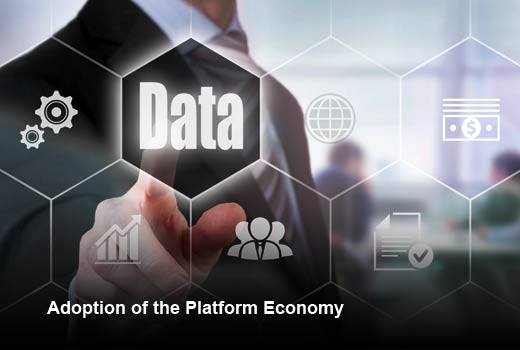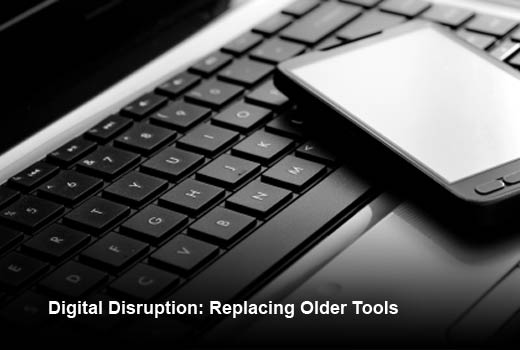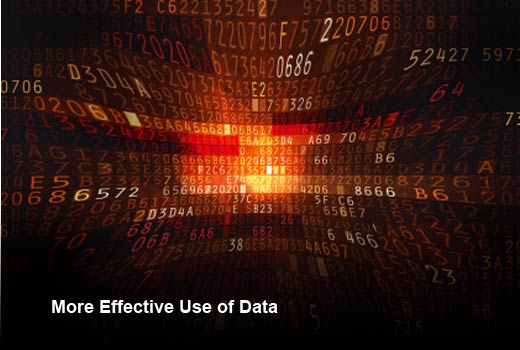Digital disruption is using technology to transform everything about the way businesses are run and the way they interact with customers. As the experts at Epicor Software have pointed out, digital disruption isn’t so much an IT project as the future of business, and this requires widespread collaboration across all units.
As Ajay Khanna, VP of Product Marketing at Reltio, explains, the digital disruption we are witnessing today started with the emergence of social, mobile and cloud computing technologies, leading to new business and economic models with a strong focus on the customer experience. It is fueled by cloud-based modern data management technologies that help companies build a reliable data foundation for better and faster data-driven decision management and become more customer-centric by having a deep understanding of their customers.
Digital disruption requires enterprises to rethink the way they operate. In this slideshow, Sue Marquette Poremba has identified some of the ways that digital disruption is being used.
Sue Marquette Poremba has been writing about network security since 2008. In addition to her coverage of security issues for IT Business Edge, her security articles have been published at various sites such as Forbes, Midsize Insider and Tom’s Guide. You can reach Sue via Twitter: @sueporemba
The World of Digital Disruption
Click through for nine ways that digital disruption is being used to meet business challenges, create new industries and provide better customer care, as identified by Sue Marquette Poremba.
A Successful Meeting in the Digital Workplace
Today, employees can set up in-person meetings across the globe using Skype for Business, share their desktop to give presentations easily to everyone, take team-editable notes using OneNote, post notes to SharePoint for group editing and review, and save to OneDrive for future reference and easy access. But, says Paul Rigby, SVP, Business Operations with Vitalyst Response, disruptive technology tools alone won’t accomplish the goal of enterprise productivity. This meeting will work only when all employees possess the knowledge and skills to utilize digital enterprise tools seamlessly and to their highest potential, creating greater workplace productivity.
Adoption of the Platform Economy
According to Craig Bachmann, senior director of the Open Digital program at TM Forum, an example of digital disruption in the workplace is found in the growing adoption of the platform economy. Organizations are increasingly using data from external ecosystems to offer new services. In addition to some of the more well-known platform players – such as Uber, which owns no cars, Facebook, which owns no content, and Airbnb, which owns no real estate – many smaller enterprises also offer platform-centric solutions using APIs that bring together buyers and sellers, such as in the areas of cloud services, security and privacy.
Digital Disruption: Replacing Older Tools
Companies have seen the way they work with technology being disrupted, says Max Dufour, partner-Digital Strategy with Harmeda. “Solutions such as Box, Office 365 or Google can replace and enhance the older tools, while saving money, and end up requiring less implementation work than the tools used 10 years ago,” Dufour says.
More Effective Use of Data
Organizations continue to grapple with how to most effectively use the vast amounts of data being produced at an unprecedented velocity. Ajay Khanna, VP of Product Marketing at Reltio, explains that new modern data management innovations are disrupting the Big Data space, allowing businesses to put data to work for them. In turn, Big Data can assist in understanding markets, drive new revenue opportunities, achieve business goals and increase the bottom line.
Digital Disruption and Customer Interaction
Geoff Webb, vice president, Product Marketing and Solutions Strategy at Micro Focus, believes that digital disruption will be felt most immediately in the way many businesses interact with their customers.
“Tying together customer databases with more analytics, and richer information sources, will offer immediate gains in how businesses market to, build products for, and support their customers,” Webb says. “Businesses will know more about their customers than ever before because they will be able to triangulate customer identities with product IDs, and usage behavior in ways that had been unthinkable 10 years ago.”
Improving Medical Procedures with Disruptive Technology
When fed enough data, a computer can become as proficient as humans at medical tasks, says Dr. Darren Schulte, CEO of Apixio.
“Already we’re seeing surgeons conduct laparoscopic surgery with the da Vinci Surgical System, using the surgical bot to control tiny, precise movements of surgical instruments,” says Dr. Schulte. As health care technology companies master data analytics at scale, expect to see the development of more services that rely on digital disruption.
Integrating the Supply Network
The aerospace-and-defense industry is using digital tools to integrate an enormously complex supply network. According to Dave Evans, CEO of Fictiv, an example of this is a modern jet turbine engine that has hundreds of individual parts, some of which the engine manufacturer makes in-house, and others it sources from a network of dozens of vendors.
“Cloud computing-based tools enable a new level of transparency between engineers and suppliers, reducing the labor required to manage design changes, and increasing speed across the entire product development process,” says Evans.
Real-Time Visualization
Insureon uses real-time visualization of incoming calls, says company CEO Ted Devine. This lets the call center team see where the warmest leads are and lets managers understand at a glance where they’re succeeding and where they need to pick up the pace.
Challenges that Digital Disruption Presents
Thanks to the internet, we now have disintermediation, where manufacturers and wholesalers are getting closer to the end consumer, upping the ante for customer engagement/customer experience, according to experts at Epicor Software. Customers now expect the same type of interaction that they have with any of the other brands they regularly connect with. Also, a heavier reliance on virtual business means competitive barriers to entry on a global basis have fallen away. Organizations must retool to support faster response and improved ROI, the experts advise, without sacrificing integration, integrity and/or governance. The once optional tools are now mandatory.












